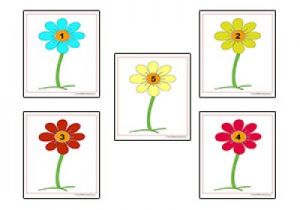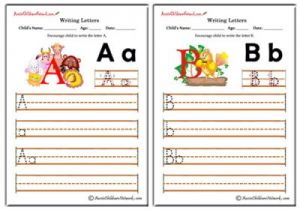

Learning environments are spaces that facilitate the all-round development of children through developmentally appropriate routines, program plans, tools as well as opportunities for play and exploration. The indoor environment, playground, outdoors are some common learning environments that should be welcoming and understanding of the needs, backgrounds and abilities of all children.
The Welcome In Different Languages Posters provides "Welcome" in 21 different languages. These are great to use as a display around the entrance to provide an inclusive environment. It's also a great way for children to learn "Welcome" in different languages from around the world.
The Children Of The World Posters show children from around the world. These are great to display within the learning environment that enable children to observe how children from different parts of the world, how they dress, similarities and differences. These are great to show diversity, belonging and harmony.
Eh oo ah
Pitjantjatjara Pitjantjatjara
Eh Oo Ah
Pitjantjatjara Pitjantjatjara
Kutju, Kutjata, Munkurpa
One, Two, Three
One, Two, Three!
Taba naba naba norem
Tugi penai siri
Dinghy e naba we
Miko keimi
Sere re naba we
Taba naba naba norem
Style
Taba naba naba norem
Tugi penai siri
Dinghy e naba we
Miko keimi
Sere re naba we
Taba naba naba norem
Style
Taba naba naba norem
Tugi penai siri
Dinghy e naba we
Miko keimi
Sere re naba we
Taba naba naba norem
Style
Translation:
Come on let's go to the reef
Get into the dinghy when the morning tide is low
Let us row to the edge of the reef
Come on let's go to the reef.
Inanay gupu wanna
Inanay gupu wanna
Ay ay ay oola
Oola oola oola ay
Yippee yay yipee yay
Goo wana goo wana
Goo wana goo wana
Goo wah - Choo!
There is a way that we can live and peace is the way
P – E – A – C – E, P – E – A – C – E, P – E – A – C – E
And peace is the way
PEACE is shaking someone’s hand and being a good friend
Clap E-A-C-E, Clap E-A-C-E, Clap E-A-C-E
And being a good friend
PEACE is dancing to the beat and having fun together
Clap, clap A-C-E, clap, clap A-C-E, clap, clap A-C-E
And having fun together
PEACE is sharing your nice smile and spreading lots of sunshine
Clap, clap, clap C-E, clap, clap, clap C-E, clap, clap, clap C-E
And spreading lots of sunshine
PEACE is choosing not to hurt and playing safe together
Clap, clap, clap, clap, E, Clap, clap, clap, clap, E, Clap, clap, clap, clap, E
And playing safe together
PEACE is helping with our hands and being kind to others
Clap, clap, clap, clap, clap, clap, clap, clap
Clap, clap, clap, clap, clap, clap clap
And being kind to others
There is a way that we can live and peace is the way
P – E – A – C – E, P – E – A – C – E, P – E – A – C – E
And peace is the way
Reference:
A Song of Peace For Kids, Jack Hartman, 22 June 2016
Hello, Bonjour, Buenos Dias!
Gday, Guten - Tag, Konichiwa
Ciao, Shalom, Do-Brey Dien
Hello to all the children of the world!
We live in different places all around the world
We speak in many different ways!
Though some things may be different
We're children just the same
And we all like to sing and play
Hello, Bonjour, Buenos Dias!
Gday, Guten - Tag, Konichiwa
Ciao, Shalom, Do-Brey Dien
Hello to all the children of the world!
There are children in the deserts
And children in the towns
And children who live down by the sea
If we could meet each other
To run and sing and play
Then what good friends we all could be
Hello, Bonjour, Buenos Dias!
Gday, Guten - Tag, Konichiwa
Ciao, Shalom, Do-Brey Dien
Hello to all the children of the world!
I spy with my little eye
Blue and grey and green.
Open, blinking,
Wide and winking,
The loveliest eyes I’ve ever seen.
I see colours, colours everywhere!
The colours of Australia, the beauty we all share.
I see colours, colours everywhere!
So let’s hold hands and show we care.
I spy with my little eye
Blonde and black and red.
Straight and long,
Curly and strong,
Different hair on different heads.
I see colours, colours everywhere!
The colours of Australia, the beauty we all share.
I see colours, colours everywhere!
So let’s hold hands and show we care.
I spy with my little eye
Peach and tan and brown.
Cheeks and noses,
Fingers and toes,
Beautiful skin is all around.
I see colours, colours everywhere!
The colours of Australia, the beauty we all share.
I see colours, colours everywhere!
So let’s hold hands and show we care.
We’re lucky to live in a colourful world,
With friendly boys and friendly girls,
We all look different but on the inside,
We have the same heart and we wear it with pride!
I see colours, colours everywhere!
The colours of Australia, the beauty we all share.
I see colours, colours everywhere!
So let’s hold hands and show we care.
So let’s hold hands and show we care.
So let’s hold hands and show we care.
Reference:
Colours Of Australia, Australian Human Rights Commission, 11 October 2011

Flower Petal Counting enables children to add the correct number of petals corresponding to the...
View Worksheet...
Worksheets of writing alphabet upper and lower case letters a to z - animals theme
View Worksheet...© 2009-2025 Aussie Childcare Network Pty Ltd. All Rights Reserved.

